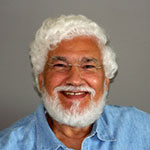August 30, 2018
When Books Span the Art and Science Divide
One of my great pleasures in life is buying art books with full colorplate pictures. That pleasure is multiplied when I find a rare volume that spans the often vast divide between art and science.
One such book that recently came into my possession is Inside the Body: Fantastic Images from Beneath the Skin (2007).
Through the use of sophisticated imaging techniques, such as the Scanning Electron Microscope (SEM), whose magnification ranges from 10 to 500,000 times, this book reveals the human body as you have never seen it before.
Having used SEM technology in my area of microchip research and design, I kept marveling over page after page of images showing the startling architecture of complex organs in networks of systems, millions of times more complex than the most intricate microchip designed to date.
The systems shown throughout Inside the Body include the nervous, digestive, urinary, reproductive, skeletal, circulatory, respiratory, endocrine and immune system.
And some of these astonishing images shed light on mysteries that have long surrounded our understanding of the human brain and our senses of hearing and balance, smell, taste, touch and sight.
Although I believe that every human being is beautiful in their own unique ways, I have always associated physical beauty with external appearance – until now, I never imagined that aesthetic beauty is also part of every cell, every element of tissue, every integrated system, and every organ of our human body.
In her Foreword to Inside the Body, Baroness Susan Greenfield writes; "you will come across cells and even areas of the body that you might rather not think about, such as the lining of the rectum, and find they actually look pleasingly a little like strawberries."
Baroness Greenfield, Professor of Pharmacology at Oxford, is a British scientist, academic, writer, broadcaster, and member of the House of Lords. In 1998 she became the first female director of the Royal Institution of Great Britain and in 2000 was awarded the CBE (Companion of the British Empire) for her remarkable service to the public’s understanding of science. She holds a PhD from Oxford and to date has received no fewer than 32 honorary degrees.
Inside the Body book provides an introduction to each section of magnified illustrations as well as informative individual captions.
On the digestive system we read:
“Food is medicine as well as sustenance, and it is the digestive system that releases the energy, vitamins, minerals and water from the bulk of the resource that is eaten. The process occurs in five well-defined phases; ingestion, fragmentation, digestion, absorption and egestion [elimination]. The system begins at the mouth and ends several hours later at 8 or 9 m farther on at the anus. A combination of voluntary and involuntary muscular movements passes the food from region to region. In the stomach the food is churned up and broken down further by more enzymes, aided by a strong solution of hydrochloric acid. Food is not absorbed in the stomach, but only alcohol can cross the stomach wall, hence its rapid effects.” (Italicized emphasis is mine.)
Surprisingly, I was impressed with pictures of the fatty tissues; they do not look that bad at all, and in fact are useful. I have learned that fat is classed as connective tissue “although it acts as a cushion and insulator than as a support.”
The book’s interesting description of fat cells continues: “… as well as being a source of energy, [they] also produce the hormone leptin, which acts on centres in the brain that tell us to stop eating. Injection of leptin can help curb the appetites of overweight people who are deficient in this hormone. However, most obese individuals have more than adequate leptin levels, suggesting that their brain receptors have reduced sensitivity to this hormone – or that they simply enjoy food too much and override the brain signals telling them to stop eating.”
As Greenfield writes in the conclusion to her Foreword:
“For anyone of any age, whether or not they are locked into the core (science) curriculum, a few moments or indeed hours, would be well spent looking through these pages and reflecting on how far we have come in terms of science, and how far we have to go still in understanding the most amazing machine, which is the human body. Someone once said that science is all about ‘seeing what everyone can see, but thinking what no one else has thought’. This book will enable you to do just that.”
To which I can only add, Amen Professor Greenfield. Amen!








